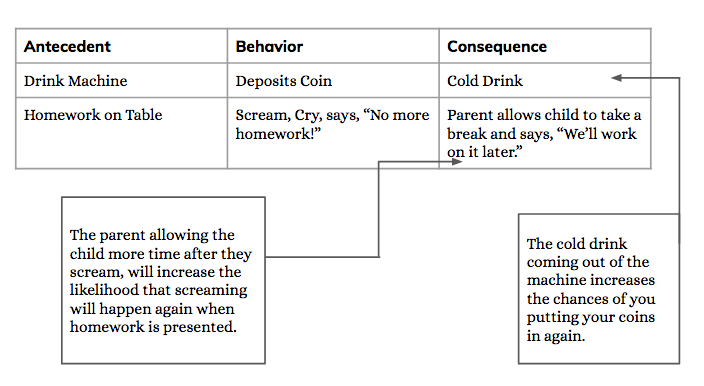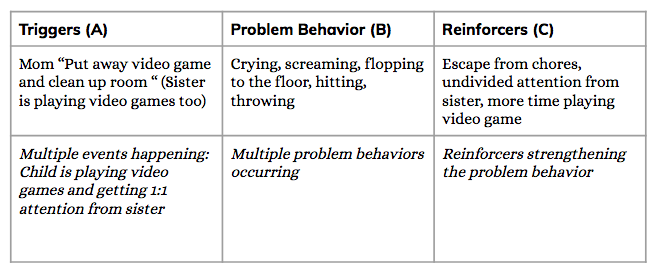Functions of Behavior
(odds are it’s not just ONE reason your child is engaging in problem behavior)
Hi everyone!! Last week we began to dive into behavior and discussed how human behavior is ANYTHING we do (good, bad, neutral). It is so important to understand why behavior happens so we can change behavior. Let’s quickly review:
A-B-C Three Term Contingency!
Antecedents: an event or activity that immediately precedes the behavior
Behavior: observable and measurable behavior that can be seen (try to leave out thoughts and feelings)
Consequences: an event that immediately follows the behaviors
Antecedents and Consequences increase or decrease the future likelihood of the behavior happening again in the future.
We use an ABC data chart to organize our information and observe the behavior over several sessions to see if there are patterns in behavior. Observing and recording ABC data can help assist in determining WHY the behavior is happening.
Let’s dig into the why: Access, Attention, Escape, Sensory
Access: behavior occurs to gain access to items and activities
Attention: behavior occurs to get attention from others around them (peers, teachers, parents, siblings, anyone else)
Escape: behavior occurs to escape a person, task, or environment
Sensory: behavior occurs because it feels good and provides some type of sensory stimulation for person
When determining why a behavior is occurring, it is important to look at these four functions, BUT much of our behavior doesn’t just happen for one of these reasons. Yes, ABC data can help us organize our information, but multiple events EVOKE problem behavior, and multiple events occur simultaneously to STRENGTHEN the problem behavior! Let’s look:
In the specific instance described above, we understand that the problem behavior is occurring because the child wants to ESCAPE from doing chores, wants continued ATTENTION from sister, and wants to have ACCESS to more time on the video game. When looking at your own ABC data, it’s important to observe the many factors co-occurring that evoke the problem behavior and strengthen the problem behavior.
Stay tuned for next week!
Cooper, J. O., Heron, T. E., & Heward, W. L. (2007). Applied behavior analysis(2nd ed.). Columbus, OH: Merrill Prentice Hall
Hanley, G. P., Jin, C. S., Vanselow, N. R., & Hanratty, L. A. (2014). Producing meaningful improvements in problem behavior of children with autism via synthesized analyses and treatments. Journal of Applied Behavior Analysis, 47(1), 16-36. doi:10.1002/jaba.106


